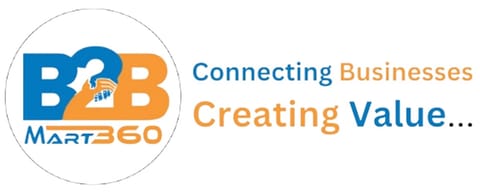₹44,500
₹21,800
₹25,000
₹25,000
₹44,500
₹21,800
₹25,000
₹25,000

| Brand | Morecare |
| Is It Folded | Folded |
| Is It Portable | Portable |
| Color | Blue |
| Frame Work | Wooden |
| I Deal In | New Only |
| Country of Origin | Made in India |
A quadriceps femoris training board is a type of physical therapy rehabilitation equipment that specifically targets the quadriceps muscles, which are located in the front of the thigh. This training board is designed to facilitate exercises that aim to strengthen and rehabilitate the quadriceps muscles. Here are some key features and benefits of using a quadriceps femoris training board:
Isolated Quadriceps Training: The board provides a dedicated platform for isolated quadriceps exercises, allowing individuals to focus solely on strengthening this muscle group. By targeting the quadriceps specifically, the training board can help improve muscle strength, endurance, and control.
Adjustable Resistance: Many quadriceps femoris training boards feature adjustable resistance mechanisms. This allows individuals to customize the level of resistance to match their current abilities and gradually increase the challenge as they progress. Adjustable resistance helps individuals set and achieve their rehabilitation goals effectively.
Range of Motion Control: Training boards often provide a range of motion control feature, enabling individuals to adjust the starting position and limit the range of motion during exercises. This can be particularly beneficial for individuals with limited mobility or those recovering from knee injuries or surgeries, as it allows them to work within a comfortable range while gradually increasing their flexibility and strength.
Stability and Safety: Quadriceps femoris training boards are designed to provide stability and support during exercises. They typically have non-slip surfaces and sturdy construction to ensure safety and minimize the risk of slips or falls. The stability provided by the board allows individuals to focus on performing exercises with proper form and technique.
Rehabilitation Progress Tracking: Some training boards come with measurement tools or markers that allow individuals and therapists to track progress over time. These measurement features can include angles, degrees, or range of motion indicators, providing objective data for evaluating improvement and setting rehabilitation goals.
Versatility: While the primary focus is on quadriceps training, many training boards also allow for additional exercises targeting other lower limb muscles. This versatility enables individuals to engage in a more comprehensive lower limb rehabilitation program, addressing multiple muscle groups and improving overall lower limb function.
It's important to note that the use of a quadriceps femoris training board should be done under the guidance and supervision of a qualified physical therapist or healthcare professional. They can assess the individual's specific needs, provide appropriate exercises and guidance, and ensure proper technique to maximize the benefits and minimize the risk of injury.
SKU-XFWCDBZZTPMC
| Brand | Morecare |
| Is It Folded | Folded |
| Is It Portable | Portable |
| Color | Blue |
| Frame Work | Wooden |
| I Deal In | New Only |
| Country of Origin | Made in India |
A quadriceps femoris training board is a type of physical therapy rehabilitation equipment that specifically targets the quadriceps muscles, which are located in the front of the thigh. This training board is designed to facilitate exercises that aim to strengthen and rehabilitate the quadriceps muscles. Here are some key features and benefits of using a quadriceps femoris training board:
Isolated Quadriceps Training: The board provides a dedicated platform for isolated quadriceps exercises, allowing individuals to focus solely on strengthening this muscle group. By targeting the quadriceps specifically, the training board can help improve muscle strength, endurance, and control.
Adjustable Resistance: Many quadriceps femoris training boards feature adjustable resistance mechanisms. This allows individuals to customize the level of resistance to match their current abilities and gradually increase the challenge as they progress. Adjustable resistance helps individuals set and achieve their rehabilitation goals effectively.
Range of Motion Control: Training boards often provide a range of motion control feature, enabling individuals to adjust the starting position and limit the range of motion during exercises. This can be particularly beneficial for individuals with limited mobility or those recovering from knee injuries or surgeries, as it allows them to work within a comfortable range while gradually increasing their flexibility and strength.
Stability and Safety: Quadriceps femoris training boards are designed to provide stability and support during exercises. They typically have non-slip surfaces and sturdy construction to ensure safety and minimize the risk of slips or falls. The stability provided by the board allows individuals to focus on performing exercises with proper form and technique.
Rehabilitation Progress Tracking: Some training boards come with measurement tools or markers that allow individuals and therapists to track progress over time. These measurement features can include angles, degrees, or range of motion indicators, providing objective data for evaluating improvement and setting rehabilitation goals.
Versatility: While the primary focus is on quadriceps training, many training boards also allow for additional exercises targeting other lower limb muscles. This versatility enables individuals to engage in a more comprehensive lower limb rehabilitation program, addressing multiple muscle groups and improving overall lower limb function.
It's important to note that the use of a quadriceps femoris training board should be done under the guidance and supervision of a qualified physical therapist or healthcare professional. They can assess the individual's specific needs, provide appropriate exercises and guidance, and ensure proper technique to maximize the benefits and minimize the risk of injury.

